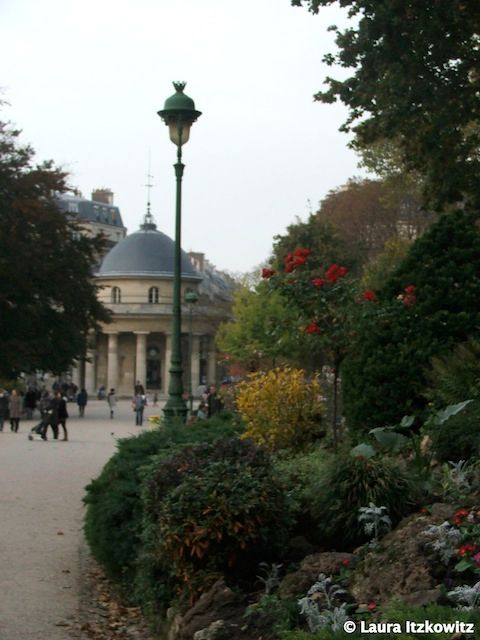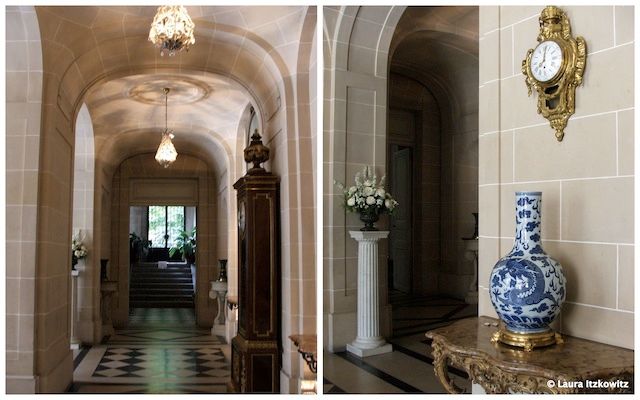Last-Minute NYC Holiday Gift Guide 🎁
We’ve created a holiday gift guide with presents for the intrepid New Yorker that should arrive just in time—


Though far from the trendier parts of Paris like Bastille and Oberkampf, there are many things to see on the other end of the Right Bank in the 17th arrondissement. When I lived in Paris, I always thought of myself as a Right Bank girl, and loved to stroll along the Avenue des Ternes, where I lived, toward Les Batignolles and Montmartre. Once I passed by the many boutiques west of the Ternes métro and took the Boulevard de Courcelles going east, I could feel the pace of the neighborhood slowing down and would float towards Le Parc Monceau with lush green hedges promising a respite behind its tall iron gates.
Le Parc Monceau is a park for true Parisians—a neighborhood park where people bring their children on Sundays and teenagers picnic on the lawn after school. The park’s scale and design is much more modest than the Jardin de Luxembourg or the Tuileries, but I always found it beautiful in its simplicity. The gravel ring around its periphery was always trod by joggers, and lovers strolled hand in hand by the little lake where roses grew and Corinthian columns suggested a bygone era. Though they are not relics of Ancient Rome, as they seem to be, they are indeed relics of an older 18th century garden. People watching was a favorite activity in the Parc Monceau, and I dreamed of living in one of the grand Haussmanian buildings across from the park, just as Colette lived at number 93 rue de Courcelles and Proust grew up at 45 rue de Courcelles long before he lived in his famous apartment on Boulevard Haussmann.

The Musée Nissim de Camondo is easy to miss as it’s hidden away from the main entrance to the park on the Boulevard de Courcelles, but if you leave through one of the gates at the back, you’ll find you’re in for a treat, as the museum provides the rare chance to visit what was once a family’s house. Count Moïse de Camondo was a wealthy Jewish banker who had moved to Paris from Istanbul (then Constantinople) at the end of the 19th century and the beginning of the 20th. He was a collector of French furniture and objets d’art from the 18th century, and had his house (constructed in 1911) modeled on Le Petit Trianon of Versailles after tearing down the original family mansion built in 1866. He had fine china from Sèvres, a silver dinner service originally commissioned by Catherine II of Russia, and even portraits by Elisabeth Vigée LeBrun, who painted Marie Antoinette.

As told by Edmund White in The Flâneur, the Camondos’ lifestyle befitted their grand mansion. Upon establishing themselves in Paris, they quickly befriended other powerful Jewish families, including the Rothschilds and the Pereires, who owned much of the property surrounding the Parc Monceau. They attended the opera in the new Palais Garnier and gave jewels to their female guests as party favors. Isaac Camondo (cousin of Moïse) bought up a significant collection of Impressionist paintings before the Impressionists were accepted by French society, including thirty paintings and pastels by Degas, as well as works by Monet, Renoir, Sisley and Pissarro. He also owned works by Post-Impressionists like Van Gogh, Matisse and Toulouse-Lautrec. Along with Edmond de Rothschild, the Count Greffuhle and Prince Roland Bonaparte, Isaac Camondo created the Society of the Friends of the Louvre, though the venerated museum hesitated to accept his donation of Impressionist paintings at first. (The Louvre has a policy of not displaying an artist’s works until he had been dead for at least ten years.) Today, Isaac Camondo’s collection is on display at the Musée d’Orsay. He also bought four hundred Japanese prints right when they were in vogue, many of which are now housed at the Musée Guimet. He and his cousin Moïse were both avid art collectors, but each had his own taste.


Moïse de Camondo planned to give his mansion with all its treasures to his son Nissim, but when World War I broke out, Nissim went to fight and was killed in an air battle in 1917 at age 25. Marcel Proust sent a condolence letter to Moïse, who decided to bequeath his mansion and its riches to the Musée des Arts Décoratifs, naming it the Musée Nissim de Camondo after his beloved son. Moïse died in 1935 and the museum opened the following year. Inside the Musée Nissim de Camondo, everything is exactly as he left it, as per his instructions. Visitors can see not only the grand salon and the library, but also the kitchen and private quarters. It’s lucky that he left the museum to the state, because during WWII, his daughter and her family were killed in the Nazi Concentration Camps. They were the last of the Camondos. Their mansion behind Parc Monceau testifies to a tragic family history, yet it’s beautiful and moving to see, as if the objects they collected can tell their story today, nearly a century after they lived and died.



Le Parc Monceau [map]
Main entrances on Boulevard de Courcelles
Musée Nissim de Camondo [map]
63 rue de Monceau
75008 Paris
Get in touch with the author @lauraitzkowitz.
Subscribe to our newsletter